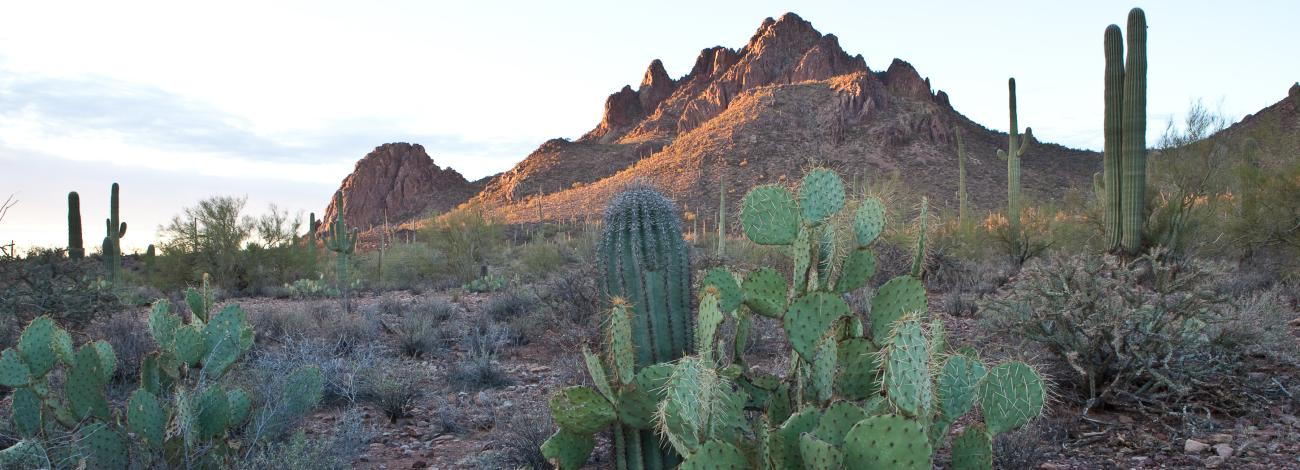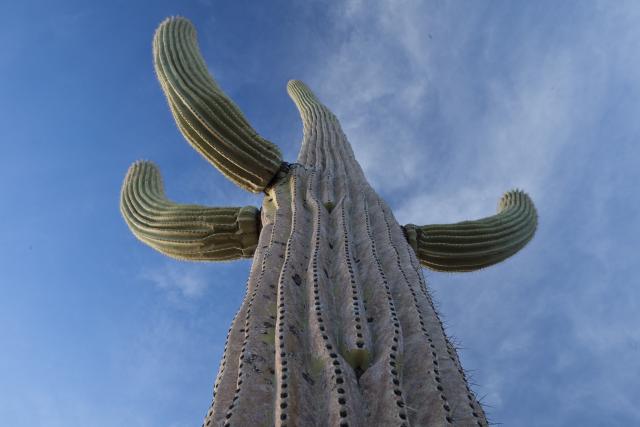
Ironwood Forest National Monument
The Ironwood Forest National Monument, which takes its name from one of the longest living trees in the Arizona desert, is 189,600 acres, of which 128,400 acres are administered by the Bureau of Land Management with the balance of land privately owned or State Trust land. Keeping company with the ironwood trees are mesquite, palo verde, creosote, and saguaro, blanketing the monument floor beneath rugged mountain ranges named Silver Bell, Waterman and Sawtooth. In between, desert valleys lay quietly to complete the setting.
Elevations here range from 1,800 to more than 4,200 feet. Ragged Top Mountain is the biological and geological crown jewel of the monument. Several endangered and threatened species live here, including the Nichols turk’s head cactus and the lesser long-nosed bat. The monument also contains habitat for the cactus ferruginous pygmy owl. The desert bighorn sheep dwelling in the region are the last viable population indigenous to the Tucson basin.
Three areas within the monument, the Los Robles Archeological District, the Mission of Santa Ana del Chiquiburitac and the Cocoraque Butte Archaeological District, are listed on the National Register of Historic Places. The area holds abundant rock art sites and other archaeological objects of scientific interest. Humans have inhabited the area for more than 5,000 years. More than 200 sites from the prehistoric Hohokam period (600 A.D. to 1440 A.D.) have been recorded in the area. In more modern times, the area was a source of minerals and continues to support active mining operations today.
Directions
From Tucson, take Interstate 10 west to Marana. Take Exit 236, turn left on Sandario Road for 0.1 mile, then turn right on Marana Road and go west about 5.8 miles to Silver Bell Road. Continue on Silver Bell Road to travel through the Ironwood Forest National Monument. Visitors can return to I-10 at Sasco Road.
Getting Around
Some roads are rugged: high clearance or four-wheel-drive vehicles are recommended in those areas. Vehicles must stay on existing routes.
Food and Supplies
The nearest stores are in Marana or Tucson.
Things to Do
Primitive camping, hiking, mountain biking, wildlife and plant viewing, horseback riding, photography, sightseeing, wildflower viewing in spring, hunting, birdwatching, fossil and geologic sightseeing, historic and archaeological sites are popular activities at the Ironwood Forest National Monument.
Camping and Lodging
Primitive camping is available at the Ironwood Forest National Monument. Lodging is available in Tucson and Casa Grande.
Hunting
Hunting is permitted through the Arizona Game and Fish Department.
Permits, Fees, Limitations
You do not need a permit to visit the Ironwood Forest National Monument.
Accessibility
There are no developed facilities at the Ironwood Forest National Monument.
Safety
There is no first-aid available on site. The nearest hospitals are in Tucson or Casa Grande.
Hazards include venomous snakes, Africanized bees, and potential encounters with illegal users of public land.
TheIronwood Forest National Monument is a travel corridor for undocumented immigrants traveling from Mexico. Report all suspected illegal activities to BLM or local law enforcement authorities. Stay safe by avoiding contact with people exhibiting suspicious behavior or engaged in dangerous activities. Drive with caution and look for fast-moving vehicles and pedestrians on back roads.
Additional Information
The Ironwood Forest National Monument contains state trust lands and private lands. Recreation on state trust lands requires a permit from the State of Arizona. Visitors should not trespass on private lands. Contact the monument office for additional information.

